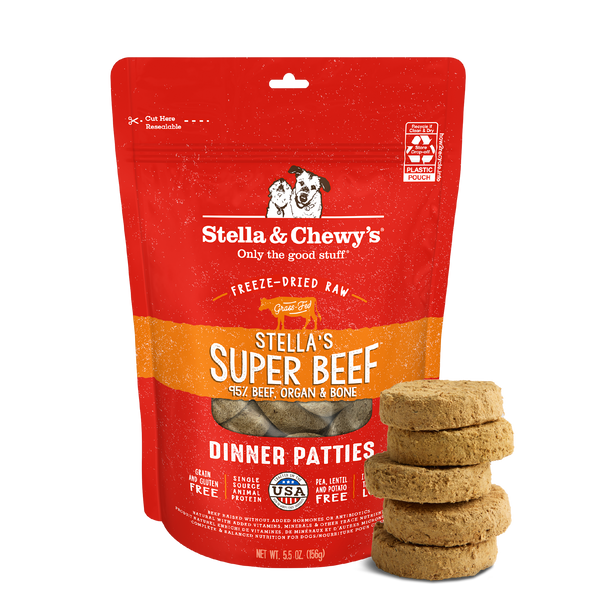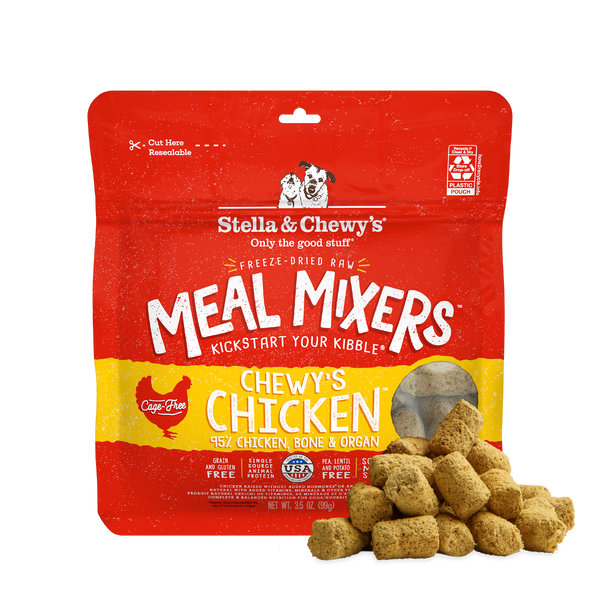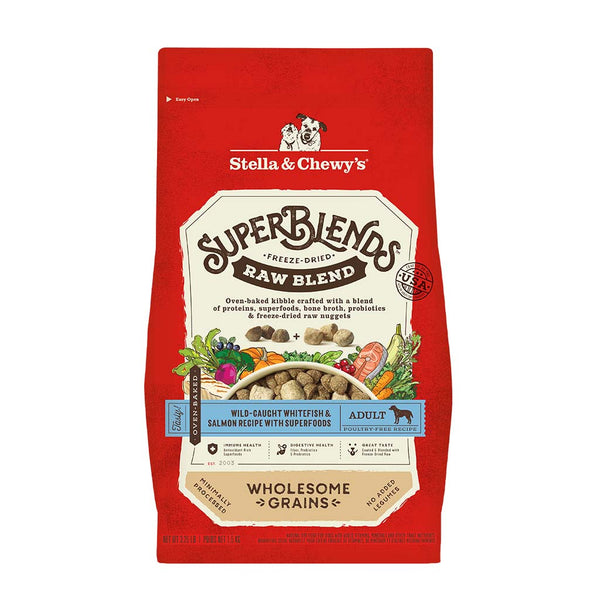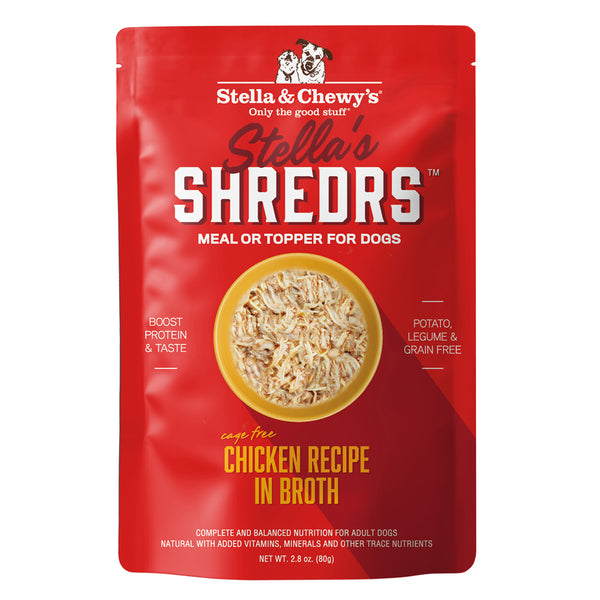With the vast range of dog food offerings available today, it’s difficult even for savvy dog owners to make the best choice for their best friend. While that answer is very nuanced and depends on many factors, the simpler question with a more defined set of answers also surfaces for dog owners: “What ingredients should I avoid in my dog’s food?”
While it can seem like a chemistry degree is required to understand pet food ingredient labels, there are a few recognizable ingredients that are commonly recommended by veterinary nutritionists to omit from your best friend’s diet.
Some of the top ingredients to watch out for include:
-
Butylated hydroxyanisole (BHA)
-
Butylated hydroxytoluene (BHT)
-
Sodium Hexametaphosphate
-
Ethoxyquin
-
White Flour
-
Meat By-products and By-product Meals (Ambiguous filler)
-
Carrageenan
-
MSG
-
Artificial Coloring
-
High Fructose Corn Syrup
How to Avoid Dangerous Dog Food Ingredients
Avoiding these chemicals and additives can be simplified by choosing dog foods with simple, time-tested ingredients like those found in all of Stella & Chewy’s natural dog food and treats. By choosing recipes formulated with real, natural ingredients and responsibly-sourced proteins that mirror your dog’s ancestral diet, you can rest easier knowing that they’re getting the best-in-class nutrition their body needs to thrive. But don’t just take our word for it, holistic veterinarian Dr. Candice Akers agrees that by “providing a diet rich in essential nutrients, you're laying the foundation for [your dog to live] a natural, healthy life.”

Chemical Preservatives to Avoid
A wide range of difficult-to-pronounce antioxidant preservatives can be found in commercial pet foods. While they do an excellent job of maintaining the shelf life of various ingredients, they also have raised concerns about their safety over time.
In general, natural antioxidants like vitamin C and E (and by extension Mixed Tocopherols), are the safer choice, despite the fact that they don’t provide the same level of ingredient preservation as their synthetic counterparts. Some synthetic preservatives to be aware of include:
Butylated hydroxyanisole (BHA) & hydroxytoluene (BHT)
These are antioxidant preservatives meant to extend the shelf life of food, and can be found in both human and pet food. Consumption of preservatives like BHA and BHT in high concentrations have been linked to a range of issues that develop over time, including gastrointestinal issues and even growth of tumors in humans and animals.
The FDA allows up to 0.1% BHT in pet food, and some studies have shown that doses at this level are generally safe. But for many dog owners, the potential for long-term health effects outweigh any benefit from serving it to their pets.
BHA/BHT Antioxidant Alternatives
Some natural preservatives that are used in place of BHA & BHT by premium brands like Stella & Chewy’s include:
-
Vitamin C (ascorbic acid)
-
Vitamin E (tocopherols)
Ethoxyquin
This preservative is commonly found in foods that include fish meal, helping to prevent spoilage and maintain nutritional properties of certain ingredients.
The FDA has approved usage of Ethoxyquin in up to 150 parts per million for decades and considers it safe when kept below those levels. However, concerned consumers have pointed to studies that indicate a risk for various cancers when larger quantities are consumed.
Ethoxyquin Alternatives
-
Vitamin E (tocopherols)
Sodium Hexametaphosphate (SHMP)
Dog food and treats meant to promote dental health may contain some amount of SHMP, which works as a binding agent to certain minerals, preventing the buildup of tartar. It also acts as a preservative by preventing crystallization in minerals found in the food itself. Small amounts of sodium hexametaphosphate are considered relatively safe, but studies have indicated that high levels of SHMP can lead to kidney & bone issues and a range of other disorders in lab animals.
SHMP Alternatives
Safer choices relative to SHMP include:
-
Natural, limited-ingredient dental chews made without it, such as Stella & Chewy’s Dental Delights
-
Regular manual brushing

Fillers & Binding Agents to Avoid
Various starches and by-products are used as inexpensive additives to help maintain consistency, texture and add volume to many dog foods. Some have good nutritional value, like brown rice, oats, sweet potatoes, healthy fats and proteins. However, many offer little in the way of health benefits, and can even be detrimental to your pet’s dental and digestive health by adding unneeded glutens and carbohydrates to their diet. Some of these less beneficial additives include:
White Flour
Flours are used as binding agents in many commercial dog foods (though not in Stella & Chewy’s dog kibble), but not all are created equal. White flour is processed without the wheat berry’s bran or germ included, which means much of flour’s natural fiber and nutritional value is stripped out.
Some dogs have allergies to white flour and the wheat (gluten) it contains, but even if they can consume it without it causing a reaction, the low nutritional value and classification as a refined carbohydrate makes it something that should be avoided, especially in large quantities, because dog’s saliva does not contain the enzyme amylase which digests carbohydrates. This means that any carbohydrates left over in a dog’s mouth from eating are not broken down; instead, they become stuck to your dog’s teeth, causing bad breath, plaque, tartar, and eventually dental disease if they are not removed by normal brushing or cleanings.
Furthermore, just like for humans, diets high in refined carbohydrates like white flour can result in elevated cholesterol and blood sugar levels. They should be avoided especially in dogs with diabetes, pancreatitis, hepatic (liver) disease, and other similar conditions. Of course, if you know or suspect that your dog has an illness or pre-existing condition, consult with your veterinarian to ensure they are on the proper diet for their medical needs.
Other Flours to Avoid
Besides refined white flour other flours found to have negative effects for dogs include:
-
Corn Flour - a low-quality filler that can be difficult for dogs to digest, leading to gastrointestinal issues
-
Soy Flour - an inexpensive protein source with some healthy properties, it also contains lectins which can interfere with digestive enzymes, especially in dogs with sensitive stomachs.
White Flour Alternatives
Examples of other, more digestible binding agents used in place of white flour by natural pet food brands such as Stella & Chewy’s include:
-
Whole wheat flour
-
Almond flour
-
Brown rice flour
-
Chickpea flour
-
Coconut flour
-
Oat flour

Meat By-Products and Meat By-Product Meals (Filler)
In some ways, fillers like meat by-products and by-product meals sound like they’d be beneficial (meat = protein, after all); however, many come from less-than-ideal sources and may lack the protein benefits that are found in fresh, whole meat ingredients, therefore are used as cost-cutting alternatives. Many meat by-products are rendered at high temperatures and may contain ingredients with lower protein content like connective tissues, offal, beaks, talons, and other bones. While a biologically-appropriate, ancestral diet should contain both organ meat and bones, these ingredients must be balanced with whole muscle meats, fruits, and veggies in order to make sure your dog receives all the nutrients they need to thrive.
Alternatives to Meat By-products and Fillers
The best way to avoid serving meat meal:
-
Serve food containing real, raw, dehydrated meats, such as raw meat diets and whole meat kibbles formulated based on your dog’s ancestral diet.
Carrageenan
This seaweed extract is used as an emulsifier and thickening agent in both human and dog foods. The FDA has concluded that carrageenan is a safe additive to dog food as long as it’s kept within recommended levels; However, there have been some studies linking degraded carrageenan to stomach ulcers, inflammation of the intestinal tract, and even cancer in laboratory animals.
Alternatives to Carrageenan (seaweed extract)
Other ingredients and options to avoid carrageenan include:
-
Feeding whole foods or raw diet
-
Flaxseed
-
Psyllium husk

Enhancing Additives to Avoid
Whether to boost flavor or nutritional value, there are several additives meant to enhance the benefits of dog food. Some have been shown to have negative effects when consumed in elevated amounts, such as:
Monosodium Glutamate (MSG)
MSG is a common additive found in both human and animal food that is meant to enhance flavor. It is a type of salt meant to bring out savory flavors in pet food, but it can increase sodium levels in pets. Excess sodium can lead to dehydration, liver issues and even seizures in animals that are sensitive to glutamate.
What to Look For
The FDA doesn’t require manufacturers to explicitly label MSG in their dog foods, so it’s best to keep an eye out for other ways it’s described:
-
Hydrolyzed protein
-
Autolyzed yeast
-
Natural flavors
Alternatives to MSG
Some methods to avoid MSG include:
-
Avoiding processed, commercial foods
-
Serving fresh, whole foods like raw meat and veggies

Artificial Coloring
The color of a dog’s food is of little concern for them, but many pet owners want their dog’s food to be visually appealing to them. Many pet food manufacturers understand this psychological trick and add in unnecessary dyes to make the food more enticing for humans to purchase. While offering no nutritional value, some dyes have been linked to cellular damage, cancers, and even alterations in brain chemistry in small mammal testing.
What to Look For
Artificial coloring often sticks out due to its inclusion of numbers in their ingredient listing, but some do not. Artificial ingredients to look out for in your dog’s food include:
-
Red #40
-
Yellow #5
-
Red #3
-
Tartrazine
-
Sunset yellow
-
Coloring
Alternatives to Artificial Coloring
Nutritional value-adding alternatives to artificial coloring include:
-
Turmeric
-
Blueberries
-
Beet juice

Corn Syrup
High fructose corn syrup is nearly ubiquitous in low-quality human food, but it also finds its way into some dog foods. In both cases, it’s used as an inexpensive flavor enhancer and can cause similar issues in both humans and canines: dehydration, diabetes, and obesity.
Alternatives to Corn Syrup
Natural additives with nutritional and flavor-boosting content used in place of corn syrup in dog food include:
-
Pumpkin
-
Squash
-
Cranberries
-
Blueberries
-
Spinach
-
Beets

Choosing Healthy Dog Food Options: Avoid Low-quality & Dangerous Ingredients
At Stella & Chewy’s, we understand the difficulty of choosing from today’s crowded expanse of “healthy” dog food options. While it’s always important to be educated on the types of ingredients to avoid, feeding your dog a complete and balanced diet that is as close to their natural, ancestral diet as possible is the best way to keep your furry friends happy and healthy. Since 2003, we have offered a wide range of natural recipes that dogs love and their parents can trust. Try one today from America's #1 Freeze-Dried Raw Pet Food Brand and see what over 2 million satisfied pups and parents are howling about!





